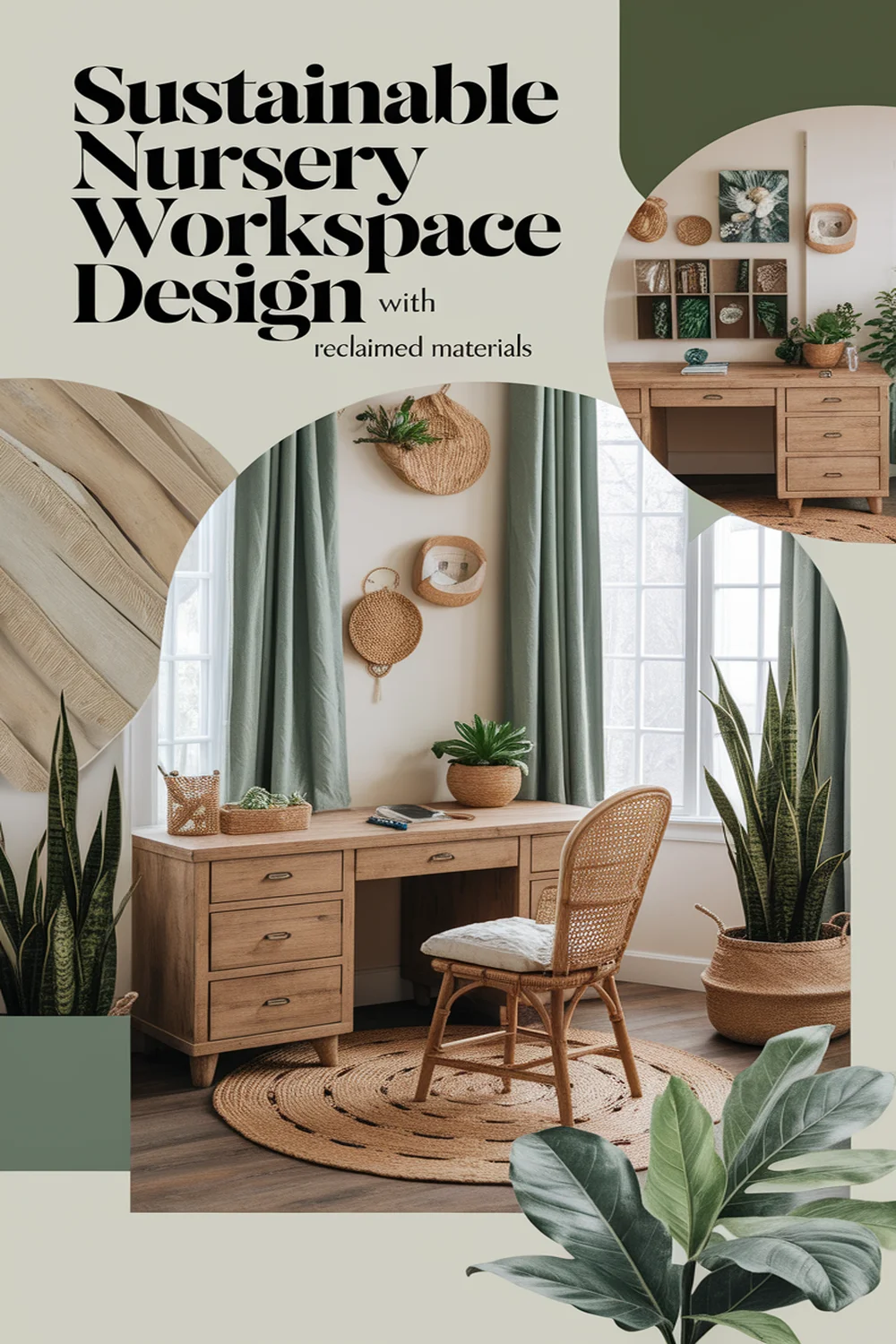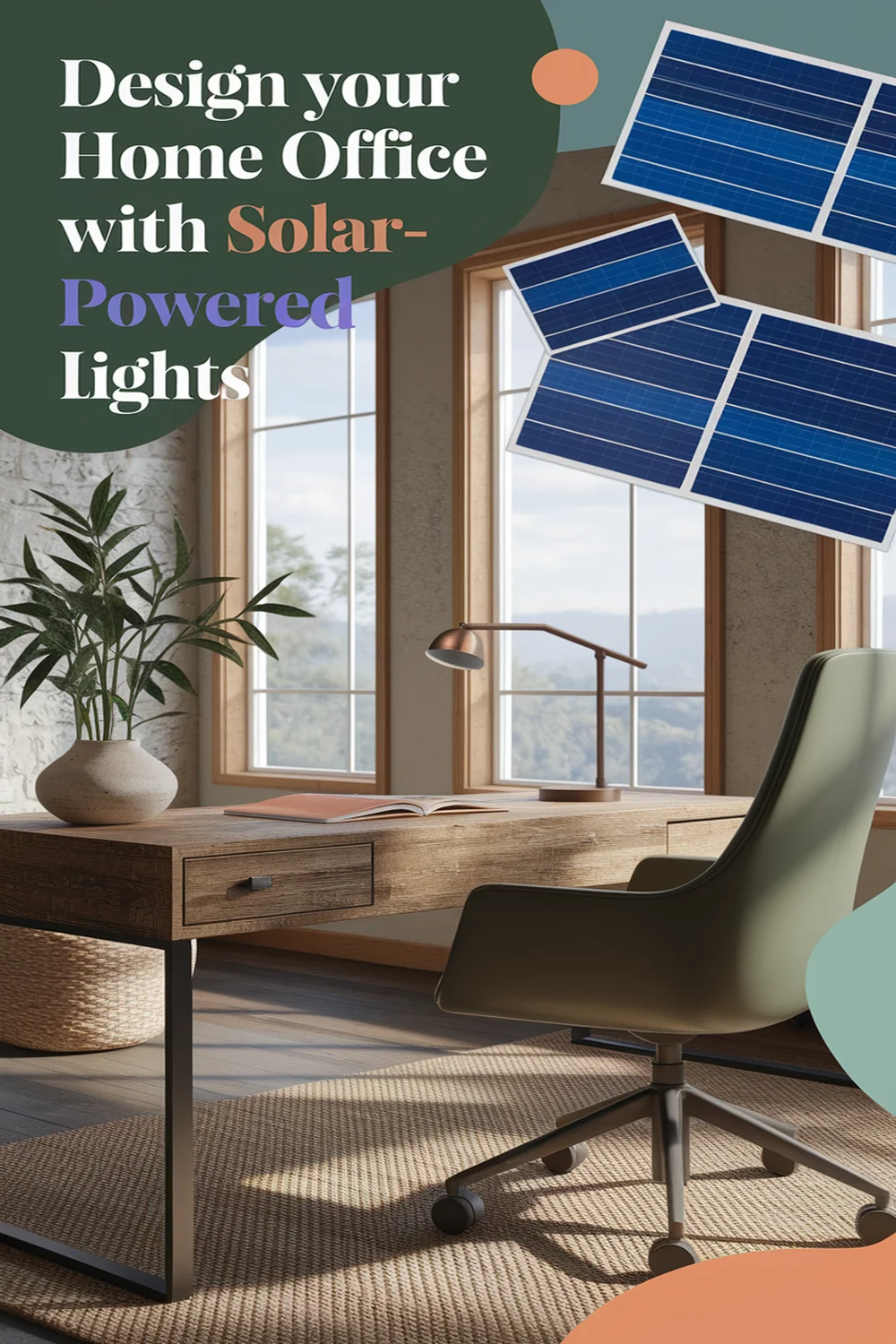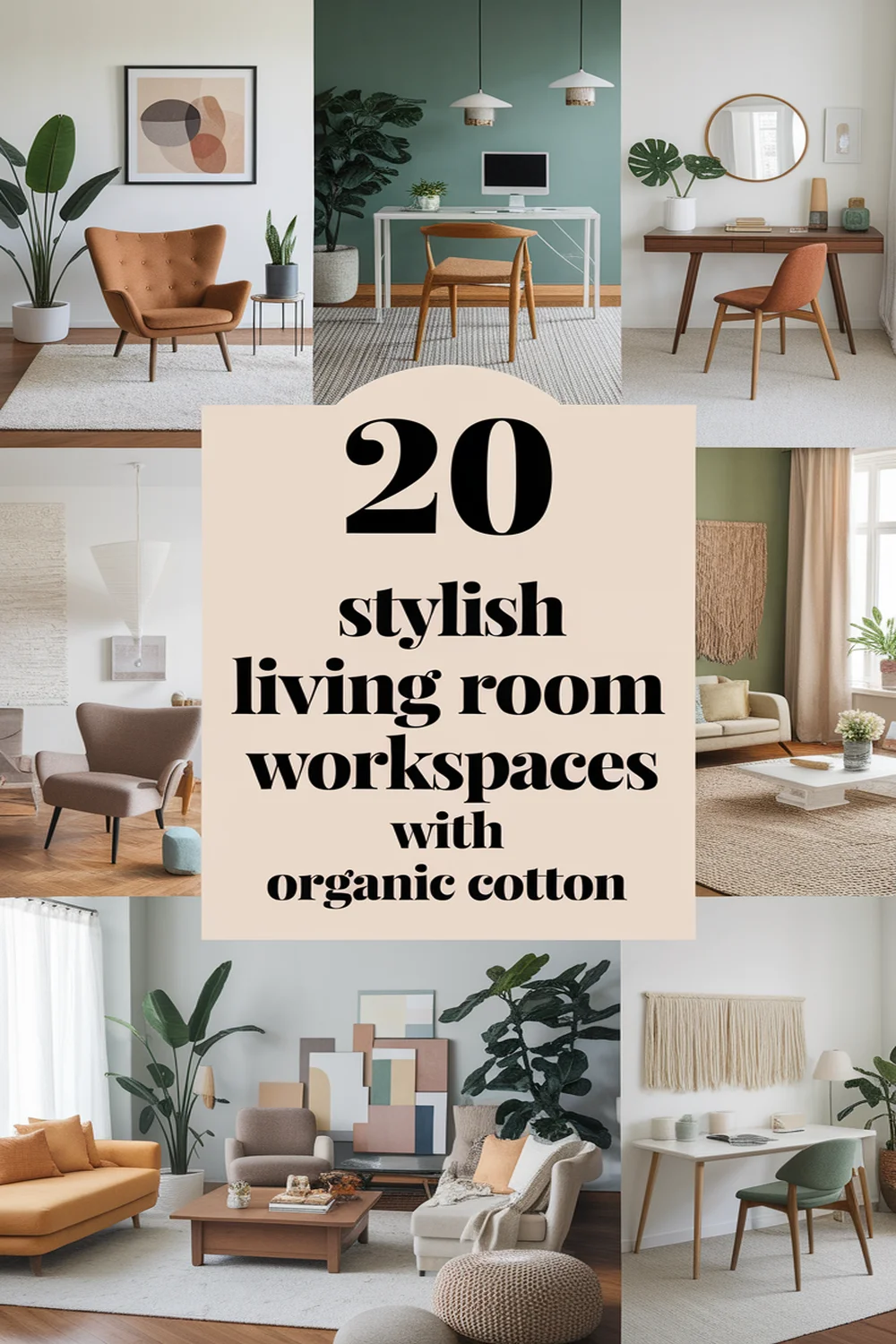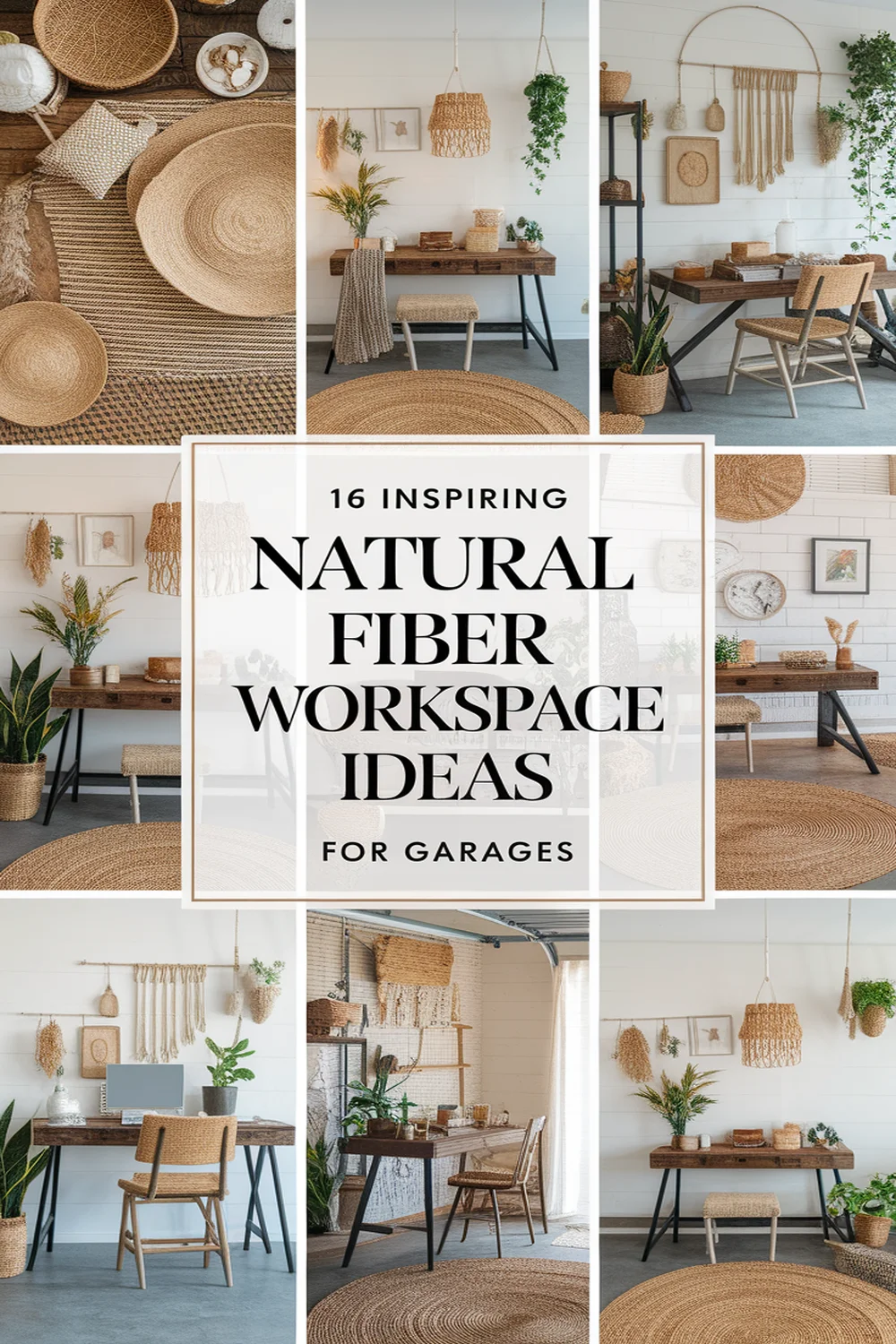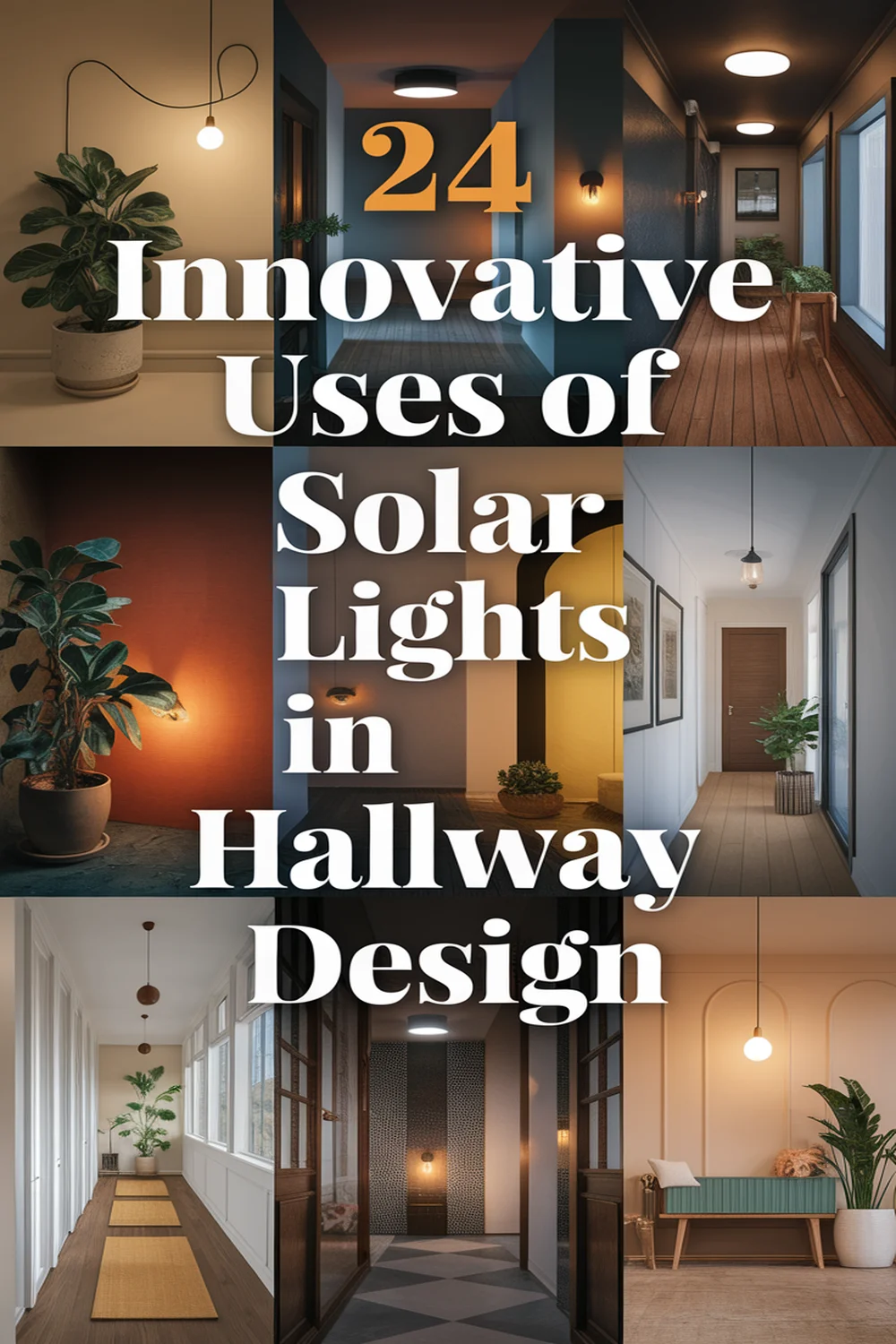This post may contain affiliate links. Please read our policy page.
To design a sustainable bedroom workspace using reclaimed materials, I’d start with unique reclaimed wood furniture, like a sturdy desk or vintage shelves that tell a story. I’d explore local salvage yards for interesting metal accents and consider creative repurposing items like crates for storage. Incorporating greenery in upcycled planters enhances the mood, while art from reclaimed materials reflects my personal style. There’s so much more to explore in crafting a truly eco-friendly workspace.
Understanding the Benefits of Reclaimed Materials

When I explore the idea of creating a sustainable bedroom workspace, I always find myself drawn to the benefits of reclaimed materials.
These treasures not only reduce waste but also add a unique character to my space. Each piece tells a story, reflecting its past while contributing to a greener future. I love how reclaimed materials come with their own history, making my workspace feel warm and inviting.
They’re often more durable than new alternatives, too, which means I’m investing in quality that lasts. Plus, using reclaimed wood or metal minimizes the need for new resources, making it an eco-friendly choice.
Choosing the Right Reclaimed Wood
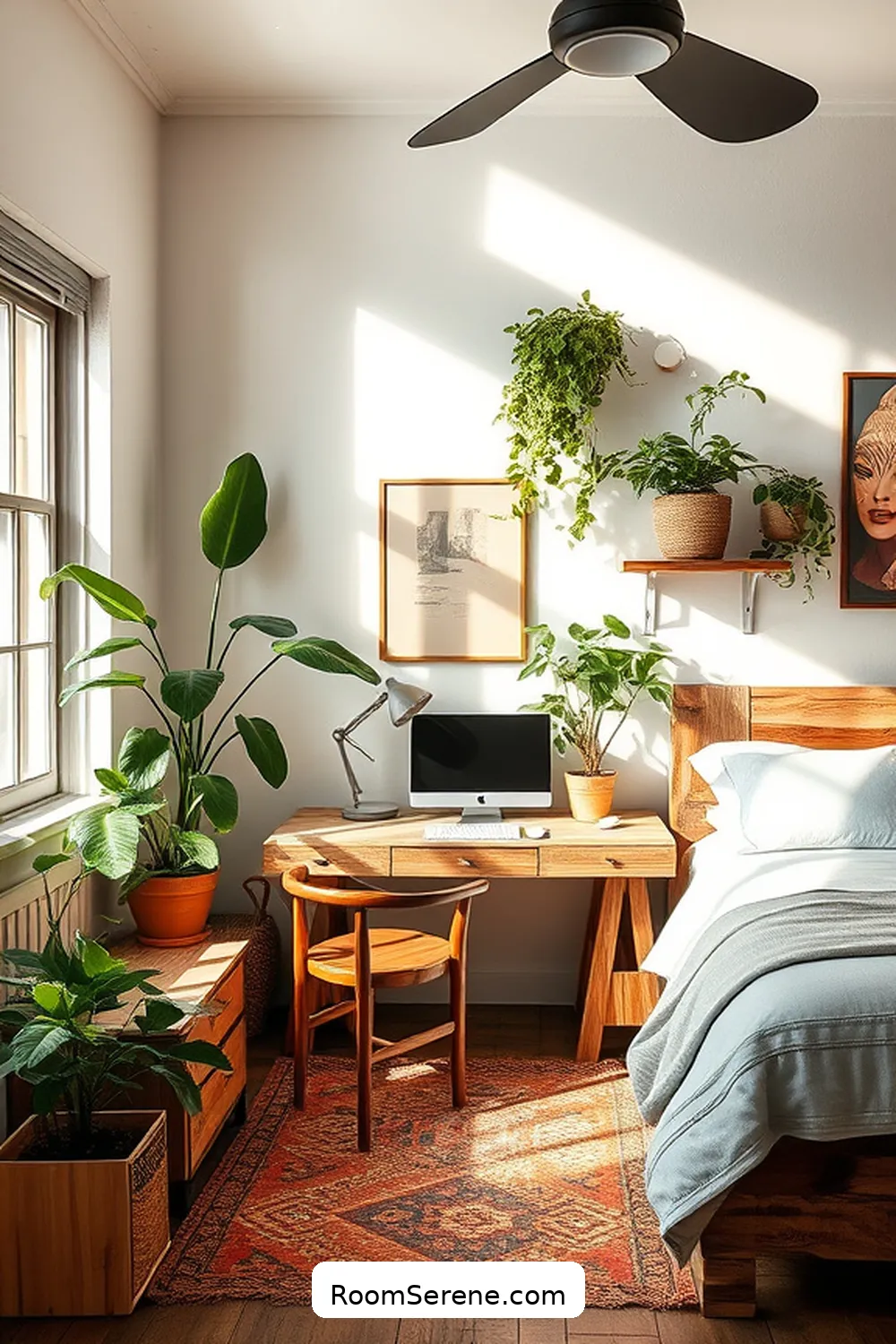
Selecting the right reclaimed wood for my bedroom workspace is an exciting journey that requires careful consideration.
I start by evaluating the wood’s origin and history—each piece tells a story, adding character to my space. I look for hardwoods like oak or maple, known for their durability and timeless appeal. The grain patterns are essential; I want something that reflects nature’s artistry.
Next, I verify the wood is free from harmful chemicals, prioritizing eco-friendly finishes. I also consider the size and shape, aiming for pieces that fit both my aesthetic and functional needs.
Recommended Items
Here are our recommended products and equipment to create your sustainable workspace—feel free to explore!
Sourcing Reclaimed Metals for Your Workspace

In my quest to source reclaimed metals for my workspace, I find that each piece offers a unique blend of history and sustainability.
I often start by exploring local salvage yards and architectural salvage shops, where I uncover a treasure trove of old pipes, beams, and hardware. Online marketplaces can also be a goldmine; I recommend checking sites dedicated to reclaimed materials.
Networking with local artisans and builders helps too—sometimes they’ve leftover scraps that can be repurposed.
I love using these metals not just for structural elements but also as decorative accents. The character they bring to my workspace is unmatched, and knowing I’m giving new life to these materials makes the space feel even more special.
Step-by-Step Guide to a Sustainable Workspace
Creative Ways to Use Reclaimed Furniture

After finding unique reclaimed metals to enhance my workspace, I turned my attention to incorporating reclaimed furniture.
I discovered that mixing various styles adds character and warmth, so I chose a vintage desk paired with a modern chair, creating a delightful contrast. An old bookshelf became a stunning display for my favorite books and plants, breathing life into the room.
I even transformed a discarded wooden crate into a stylish side table, perfect for my coffee mug during long work sessions. By incorporating these pieces, I not only minimized waste but also expressed my personal style.
Transforming a discarded wooden crate into a chic side table beautifully combines sustainability with personal flair.
Each item tells a story, making my workspace not just functional but also a reflection of my eco-conscious values.
DIY Projects for a Unique Workspace

While exploring ways to personalize my workspace, I found that DIY projects not only release creativity but also promote sustainability. One of my favorite projects was transforming old wooden pallets into a stylish desk. I sanded them down and added a coat of eco-friendly varnish, creating a unique focal point.
I also crafted wall organizers from reclaimed wood scraps, which provide stylish storage for my supplies. For a touch of greenery, I made small plant holders from upcycled tin cans, adding life to my desk. Each project not only reflects my personal style but also minimizes waste.
Incorporating Vintage Decor Elements

Although I’ve embraced a minimalist aesthetic in my bedroom workspace, incorporating vintage decor elements adds character and warmth that truly makes the space feel like mine.
I love how these unique finds breathe life into my work area while keeping sustainability at the forefront. Here are four vintage elements I’ve included:
- Antique Desk Lamp – It casts a warm glow and adds a touch of nostalgia.
- Retro Bookshelf – A reclaimed wood piece that holds my favorite reads.
- Old Suitcase – It serves as stylish storage for supplies while telling a story.
- Vintage Artwork – Unique prints that inspire creativity without compromising on eco-friendliness.
These pieces not only enhance the aesthetic but also reflect my values and history.
Designing an Eco-Friendly Desk Space
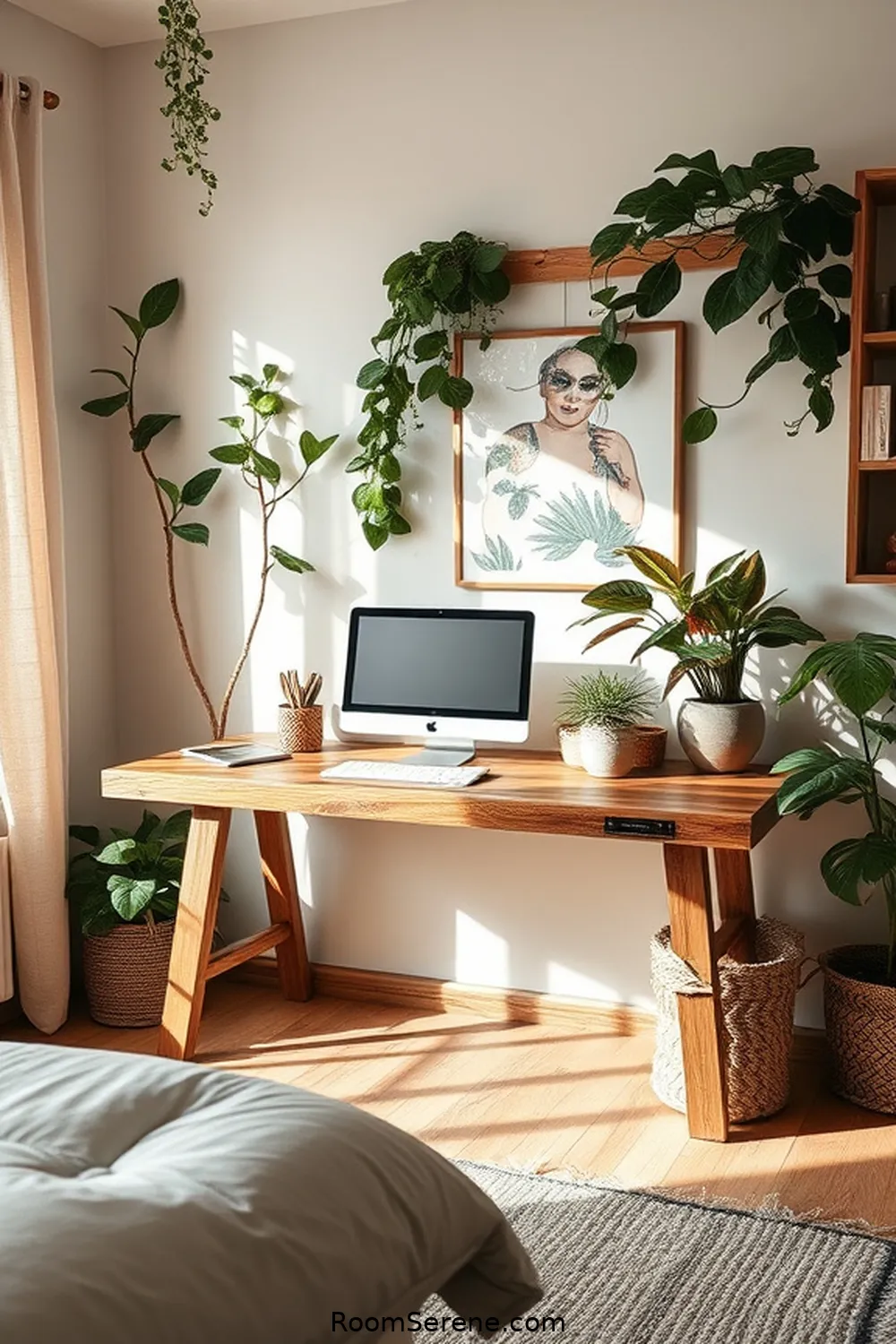
Creating an eco-friendly desk space doesn’t just benefit the planet; it also enhances my productivity and creativity.
I’ve found that using reclaimed wood for my desk not only adds character but also reduces waste. Pairing it with second-hand organizers keeps my essentials in check while maintaining a stylish look.
I love incorporating potted plants, like succulents, to purify the air and bring a bit of nature indoors. Choosing non-toxic paints and finishes is essential for my health and the environment.
I prioritize upcycled materials for my stationery, proving that sustainability can be practical.
Finally, I make sure to declutter regularly, ensuring my workspace remains inspiring and functional.
It’s all about creating a space that reflects my values while fueling my passion.
Finding Sustainable Lighting Solutions

How can I illuminate my workspace without harming the environment?
Finding sustainable lighting solutions is easier than you might think. Here are four ideas I love:
Discovering eco-friendly lighting options for your workspace is simpler than you imagine.
- LED Bulbs: These energy-efficient bulbs last longer and consume less power than traditional options.
- Solar-Powered Lights: Harnessing the sun’s energy is a brilliant way to brighten up your space naturally.
- Repurposed Fixtures: Look for vintage lamps or fixtures at thrift stores, giving them new life while reducing waste.
- Smart Lighting: Use smart bulbs that adjust brightness based on the time of day, optimizing energy use.
Utilizing Reclaimed Textiles for Comfort
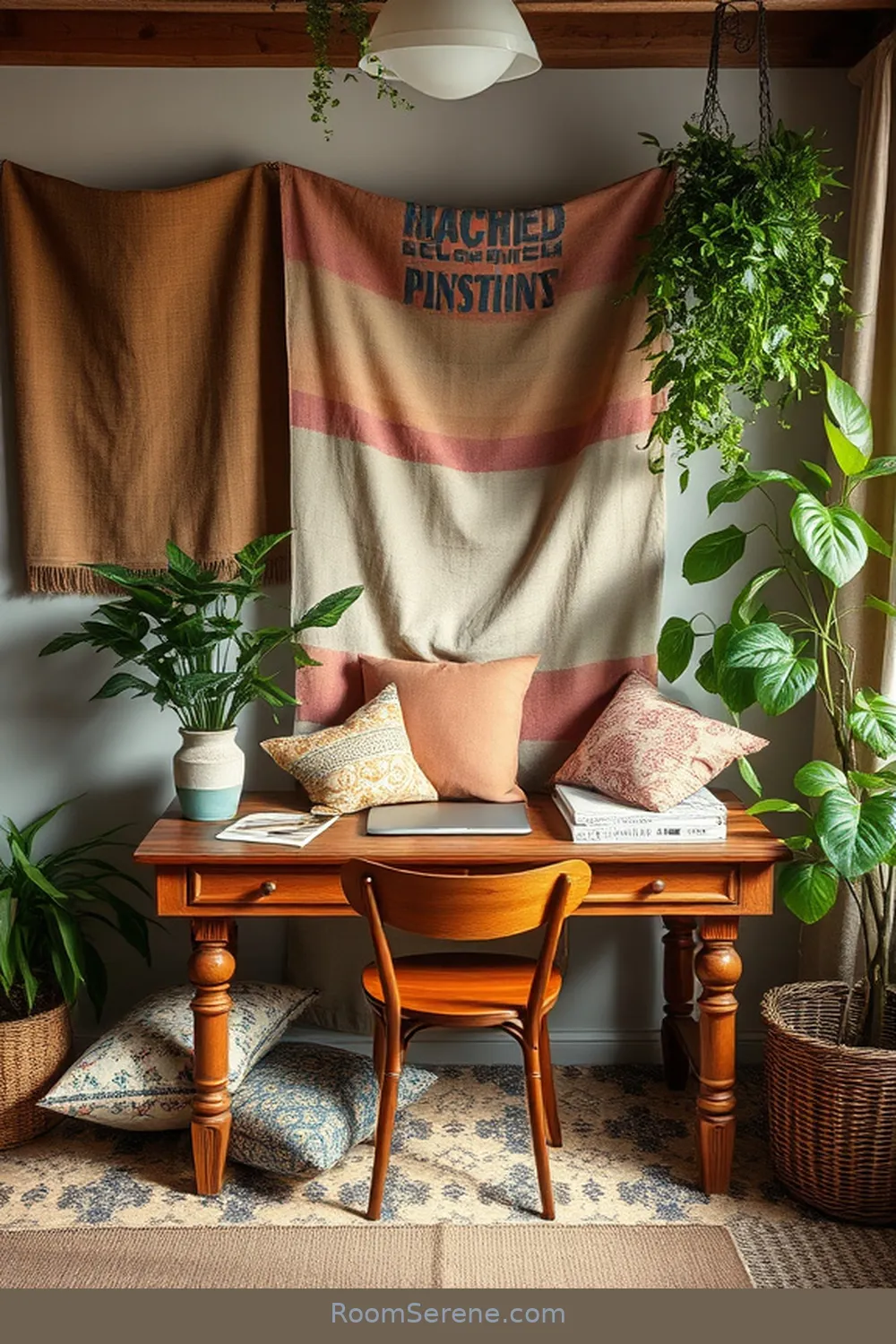
After you’ve brightened your workspace with sustainable lighting, consider how the textiles you use can further enhance both comfort and eco-friendliness. I love incorporating reclaimed fabrics like cotton, wool, and linen into my workspace. Not only do they add warmth, but they also tell a story of sustainability.
Here’s a table to inspire your choices:
| Textile Type | Source | Benefits |
|---|---|---|
| Cotton | Old shirts | Soft, breathable |
| Wool | Vintage blankets | Insulating, cozy |
| Linen | Recycled curtains | Durable, elegant |
| Denim | Upcycled jeans | Sturdy, stylish |
Utilizing these reclaimed textiles not only creates a comfortable environment but also supports a circular economy. You’ll feel good knowing you’re making a positive impact!
Creating a Functional Storage System

There’s something satisfying about having a well-organized workspace, and a functional storage system is key to achieving that harmony.
A well-organized workspace brings harmony, and an effective storage system is essential to achieve that balance.
I love incorporating reclaimed materials for this purpose. Here are four innovative ideas I’ve found effective:
- Repurposed Wooden Crates: Stack them for unique shelving or use them as drawer units.
- Old Mason Jars: These make fantastic organizers for pens, brushes, and small office supplies.
- Vintage Suitcases: Use them as stylish storage for documents or craft supplies, adding character to your space.
- Reclaimed Pallet Wall: Create a backdrop for hanging organizers—both practical and visually appealing.
Adding Greenery With Reclaimed Planters

While I appreciate the aesthetic appeal of greenery, I also love the idea of using reclaimed planters to bring life into my workspace.
I’ve discovered that old wooden crates, vintage metal cans, or even repurposed glass jars make fantastic planters. Not only do they add character, but they also reduce waste.
When I fill these planters with low-maintenance plants like succulents or pothos, I create a vibrant atmosphere that boosts my mood and productivity. Plus, it’s satisfying to know I’m making an eco-friendly choice.
I often personalize my planters with natural paints or decorative stones, giving each piece a unique touch.
These reclaimed planters not only enhance my workspace but also reflect my commitment to sustainability.
Personalizing Your Workspace With Art

To truly make my workspace feel like my own, I focus on incorporating art that resonates with my personality and values. Art not only brightens my space, but it also inspires creativity and positivity.
Here are some ideas I love:
- Reclaimed Wood Frames: I use old wood to frame prints or photos, giving them a rustic touch.
- Local Artists: Supporting local talent, I hang pieces that reflect my community and its culture.
- Nature-Inspired Art: I find prints featuring landscapes or plants, connecting me to the outdoors.
- DIY Projects: I create my own artwork from repurposed materials, making every piece unique and meaningful.
With these elements, my workspace becomes a true reflection of who I am.
Ensuring Ergonomics in Your Design
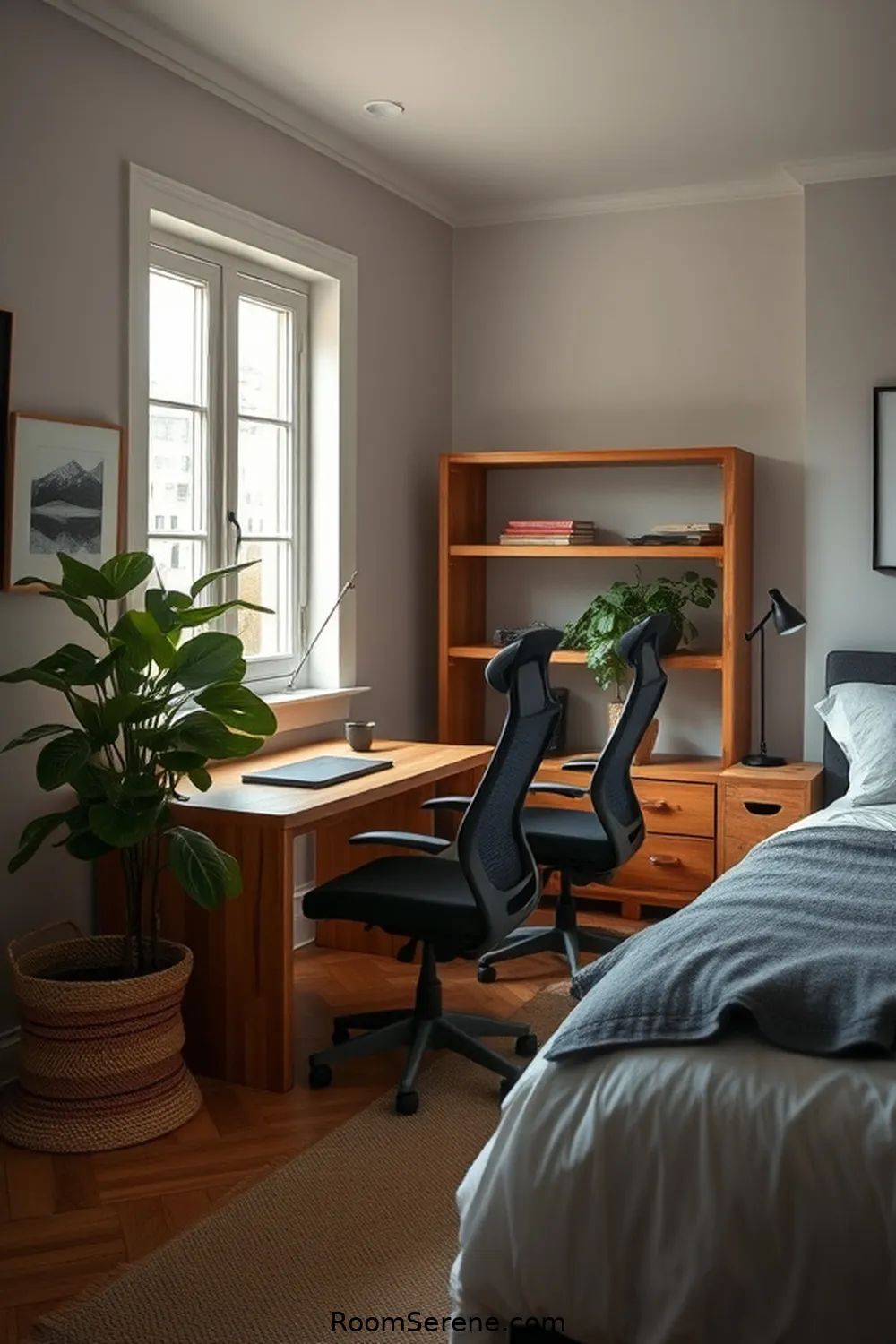
Creating a workspace that prioritizes ergonomics is essential for both comfort and productivity, especially since I spend long hours at my desk.
I start by choosing a reclaimed desk that offers an adjustable height feature, allowing me to alternate between sitting and standing. I pair it with a chair made from sustainable materials, ensuring it supports my back while being eco-friendly.
I position my computer screen at eye level, reducing neck strain, and use a keyboard and mouse that promote natural wrist alignment.
To enhance my workspace, I incorporate a footrest made from reclaimed wood, encouraging proper posture.
Maintaining a Minimalist Aesthetic
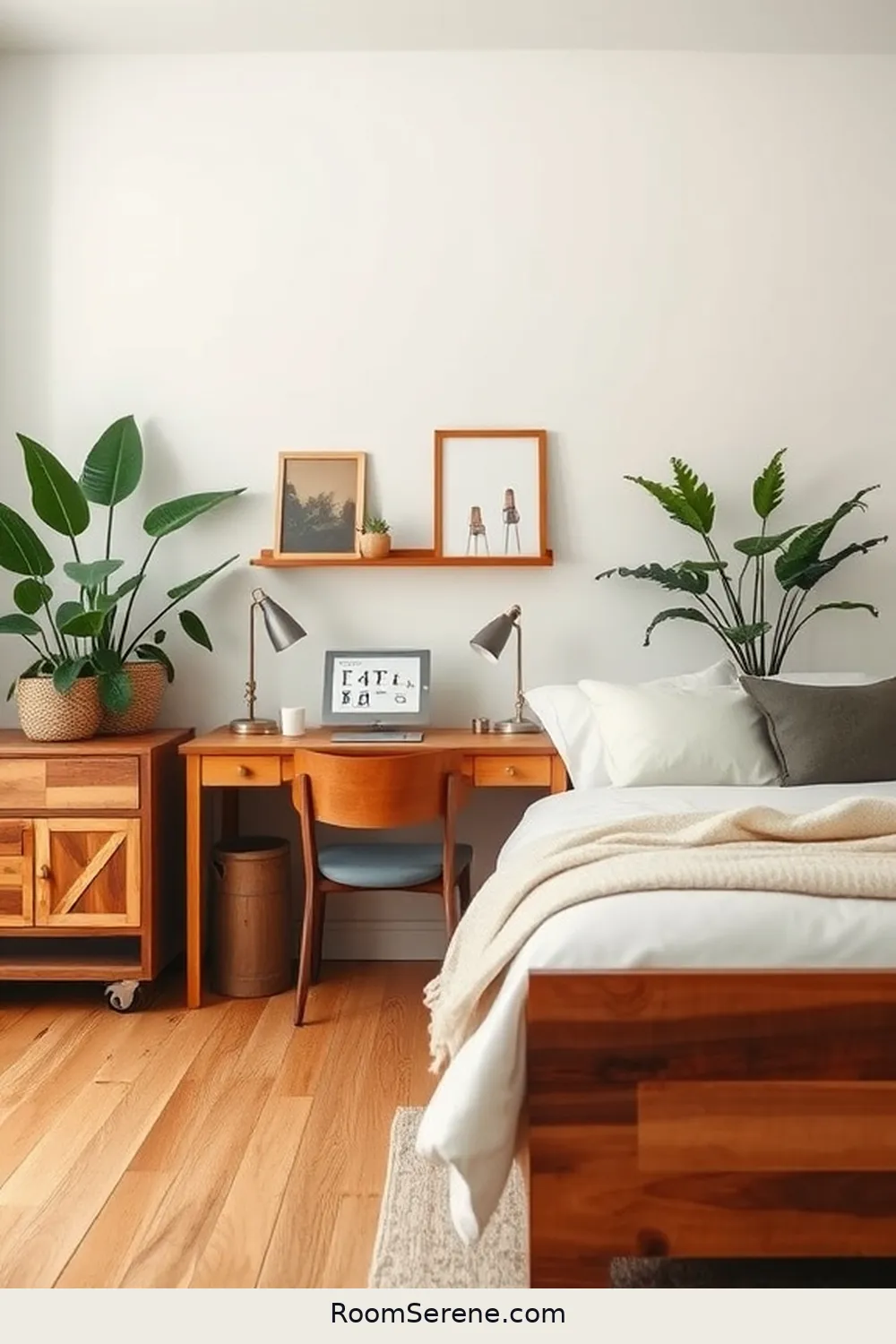
A minimalist aesthetic complements the ergonomic setup I’ve established in my workspace, allowing for a clean, uncluttered environment that fosters focus and creativity.
To maintain this aesthetic while using reclaimed materials, I focus on key elements:
Focusing on multi-functional pieces, a limited color palette, and natural elements keeps my workspace stylish and sustainable.
- Choose Multi-Functional Furniture: I opt for pieces that serve more than one purpose, like a desk with built-in storage.
- Limit Color Palette: I stick to neutral tones that harmonize with the reclaimed materials, creating a cohesive look.
- Declutter Regularly: I make it a habit to remove any unnecessary items that don’t serve a purpose or inspire me.
- Incorporate Natural Elements: I add plants or reclaimed wood accents to bring warmth and life without overwhelming the space.
This approach keeps my workspace both stylish and sustainable.
Tips for Staying Organized and Inspired

While it’s easy to get lost in the chaos of daily tasks, staying organized and inspired in my workspace is essential for productivity. I’ve found that repurposing old containers and boxes not only keeps my supplies tidy but also adds a unique touch to my décor.
I hang a corkboard made from reclaimed wood to display inspiring quotes and my vision board, keeping my goals front and center. To minimize distractions, I designate specific areas for different tasks, creating a flow in my work routine.
Using natural light as much as possible fuels my creativity, while plants enhance the air quality and aesthetic. By integrating these simple practices, I cultivate an organized and uplifting environment that fosters innovation and sustainability.




